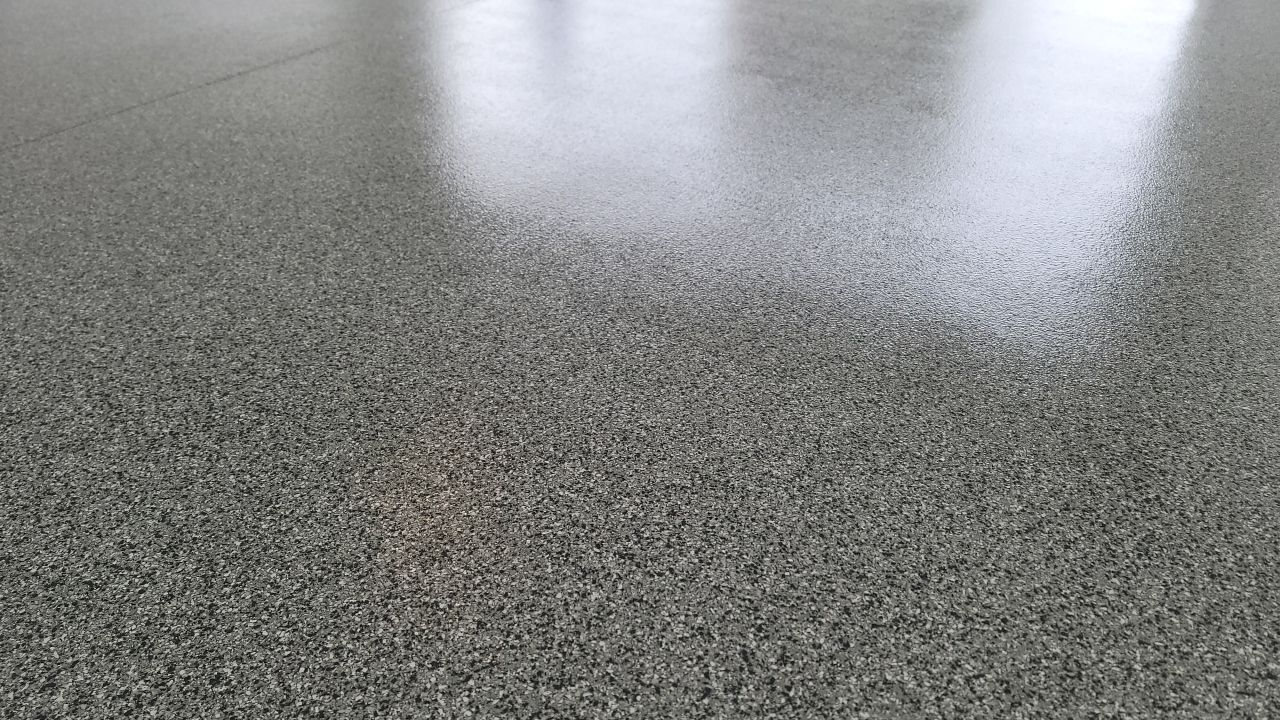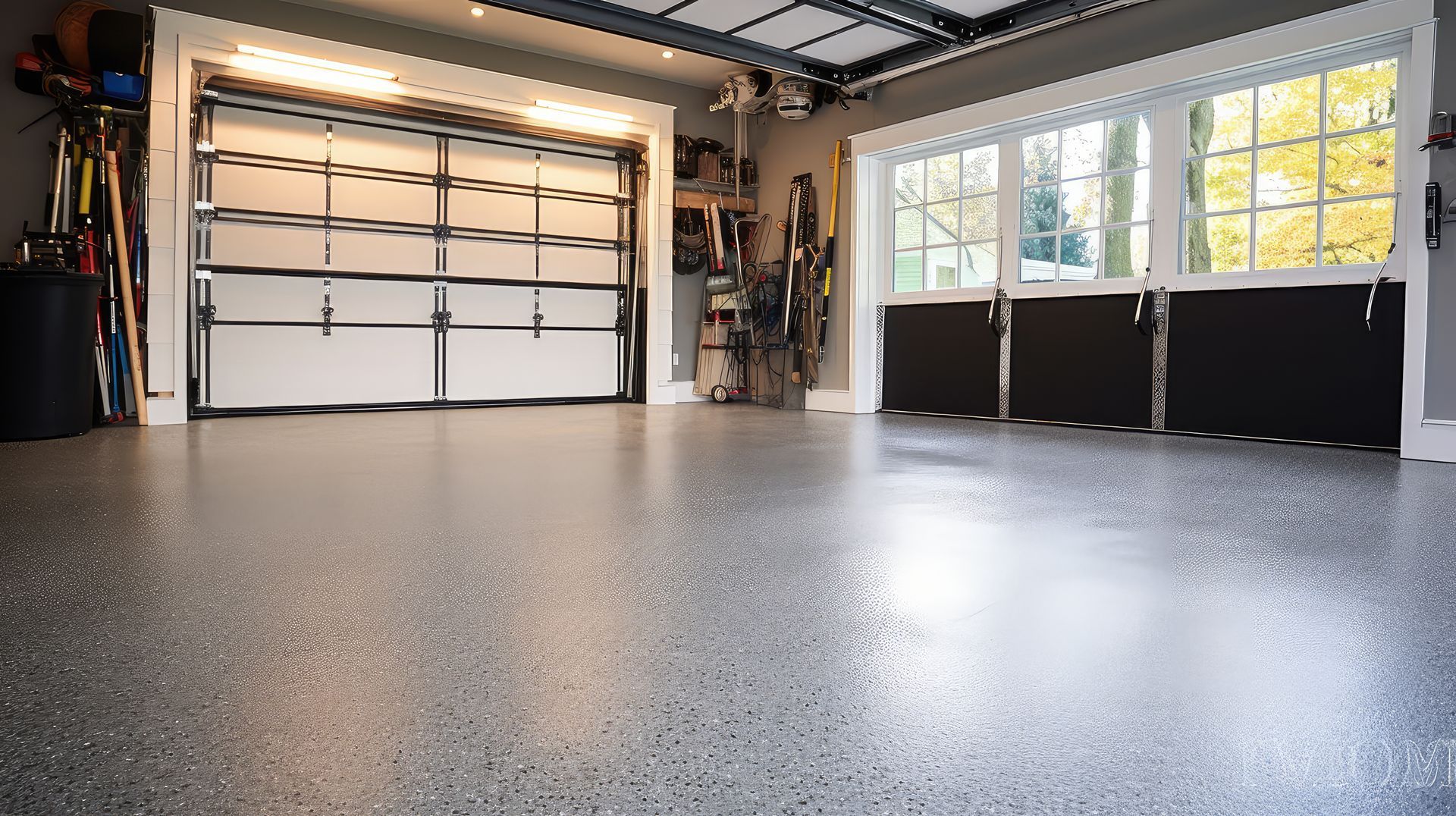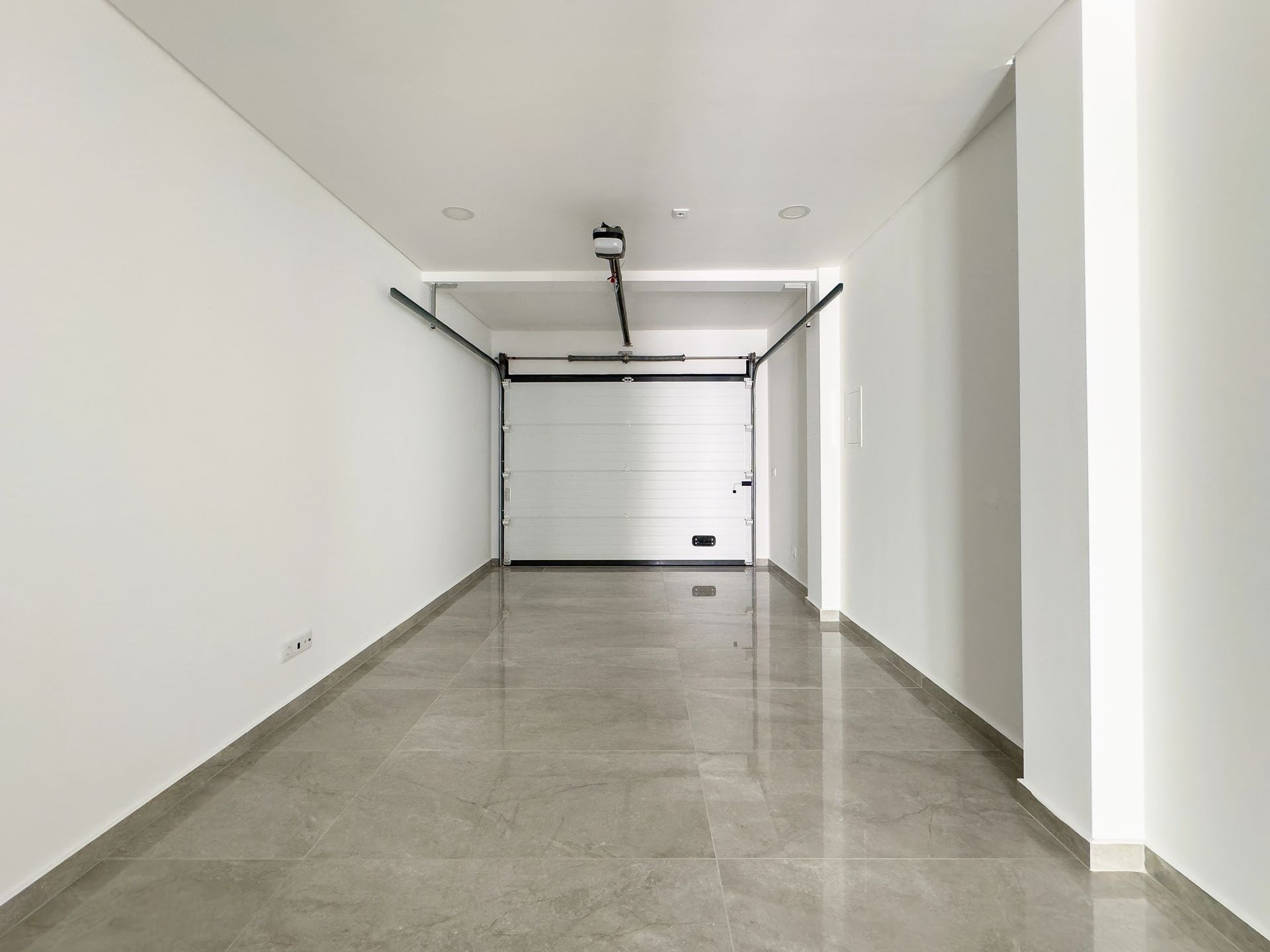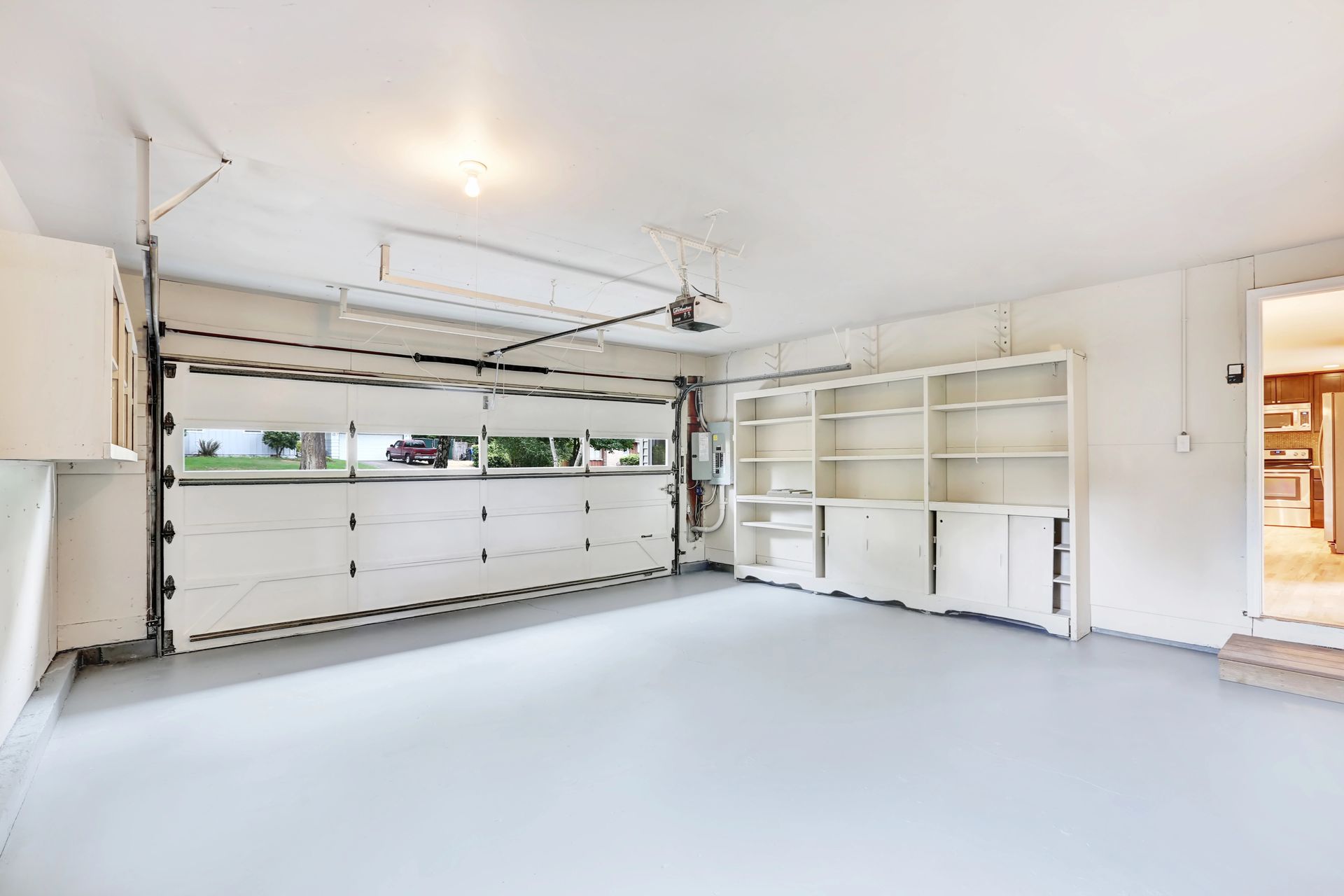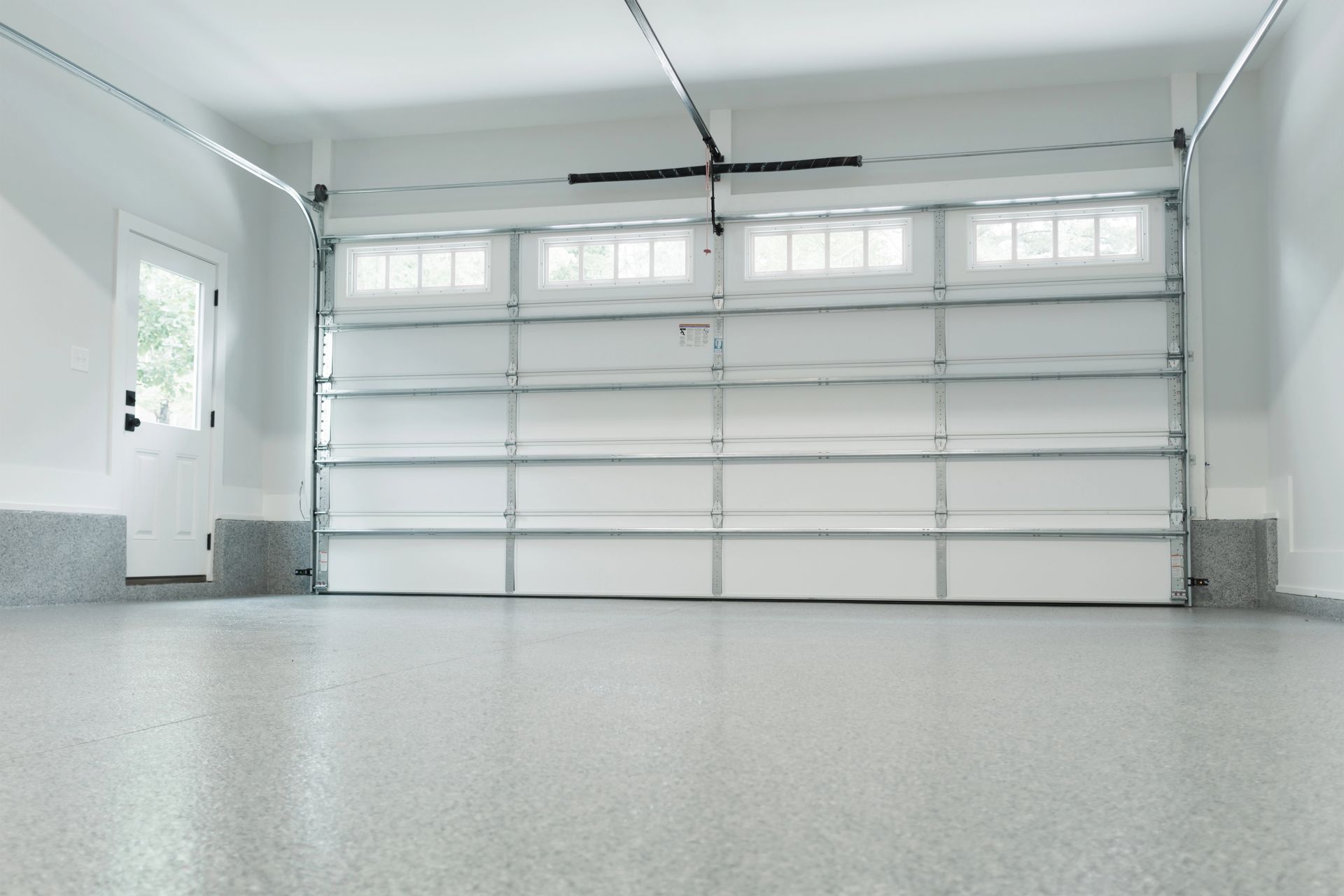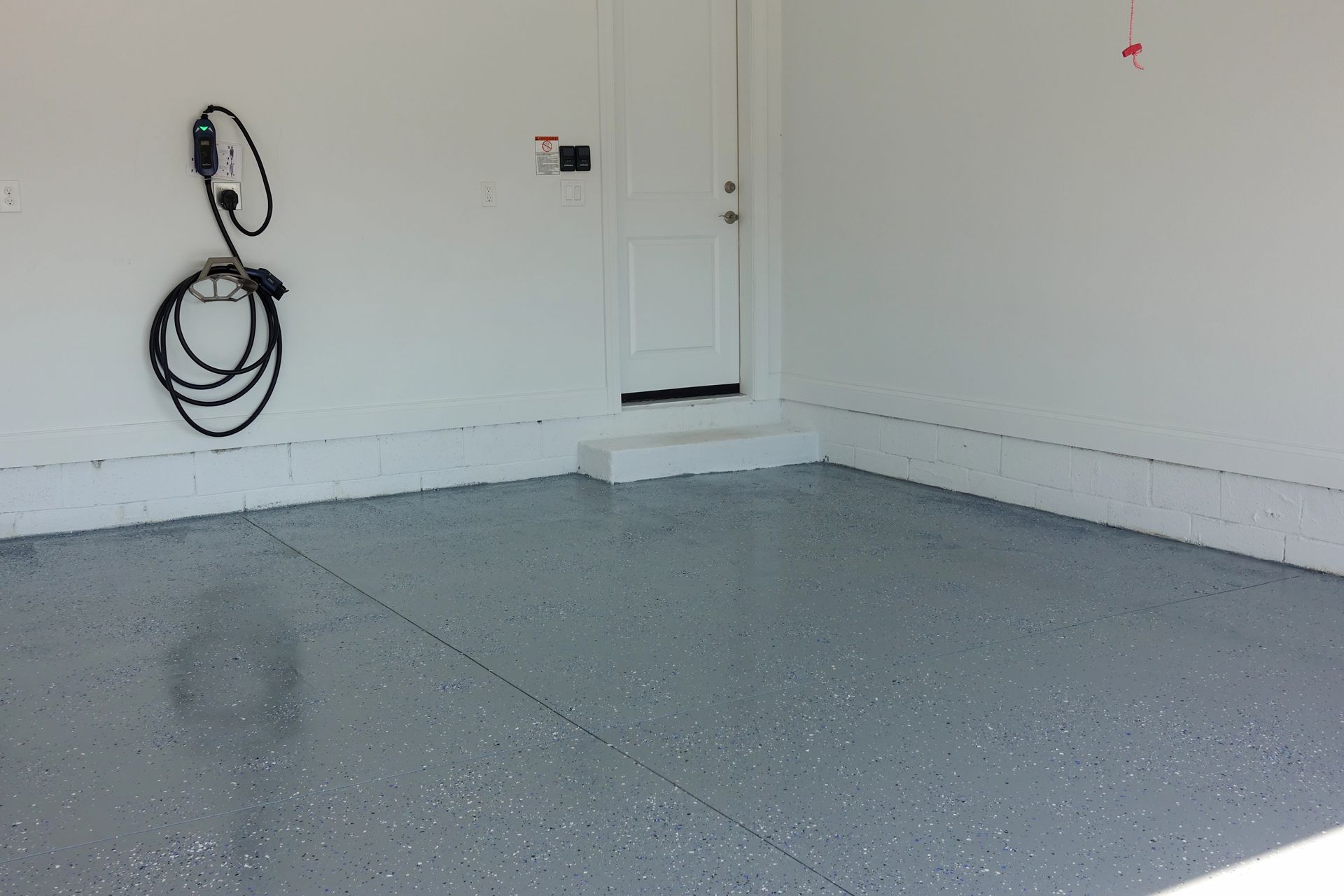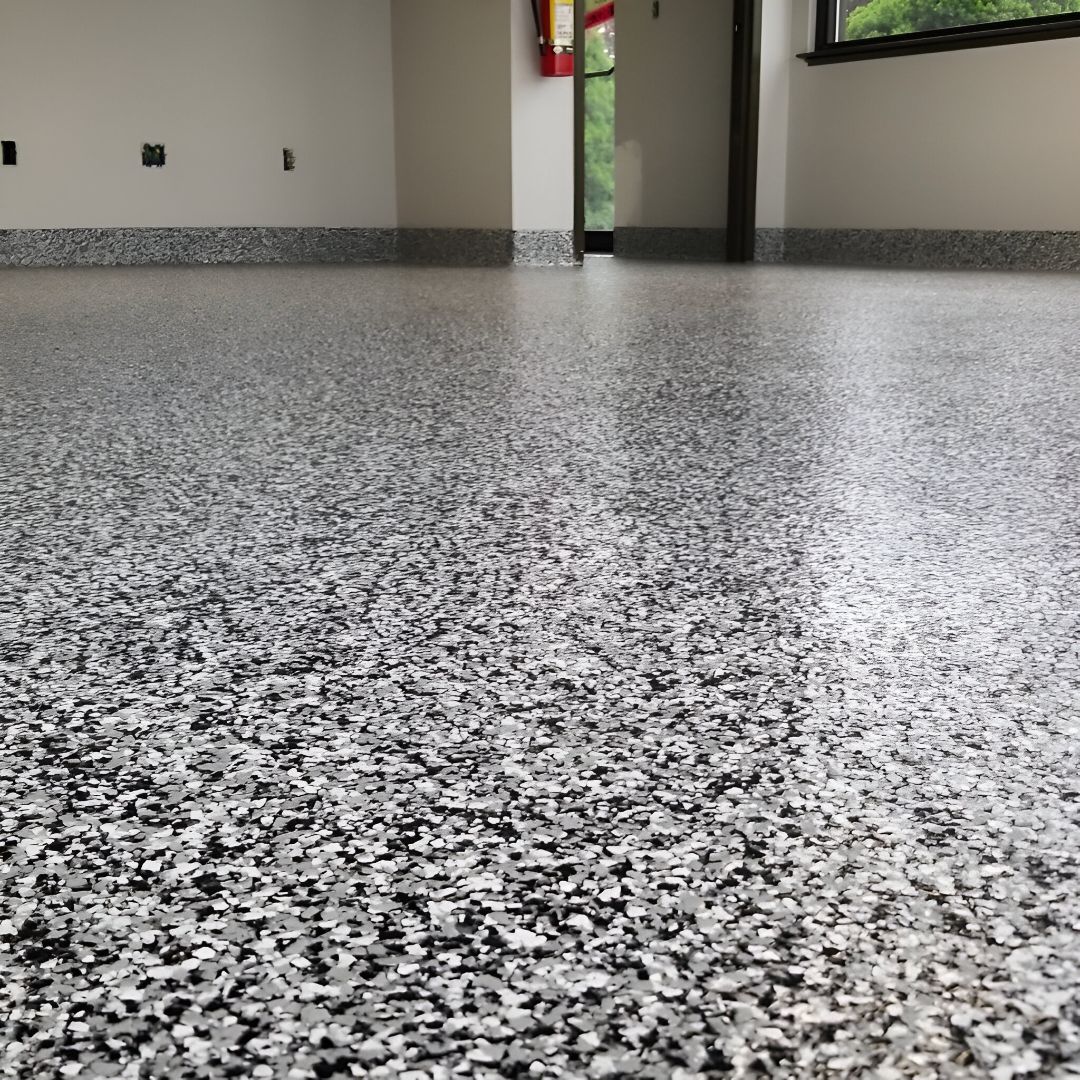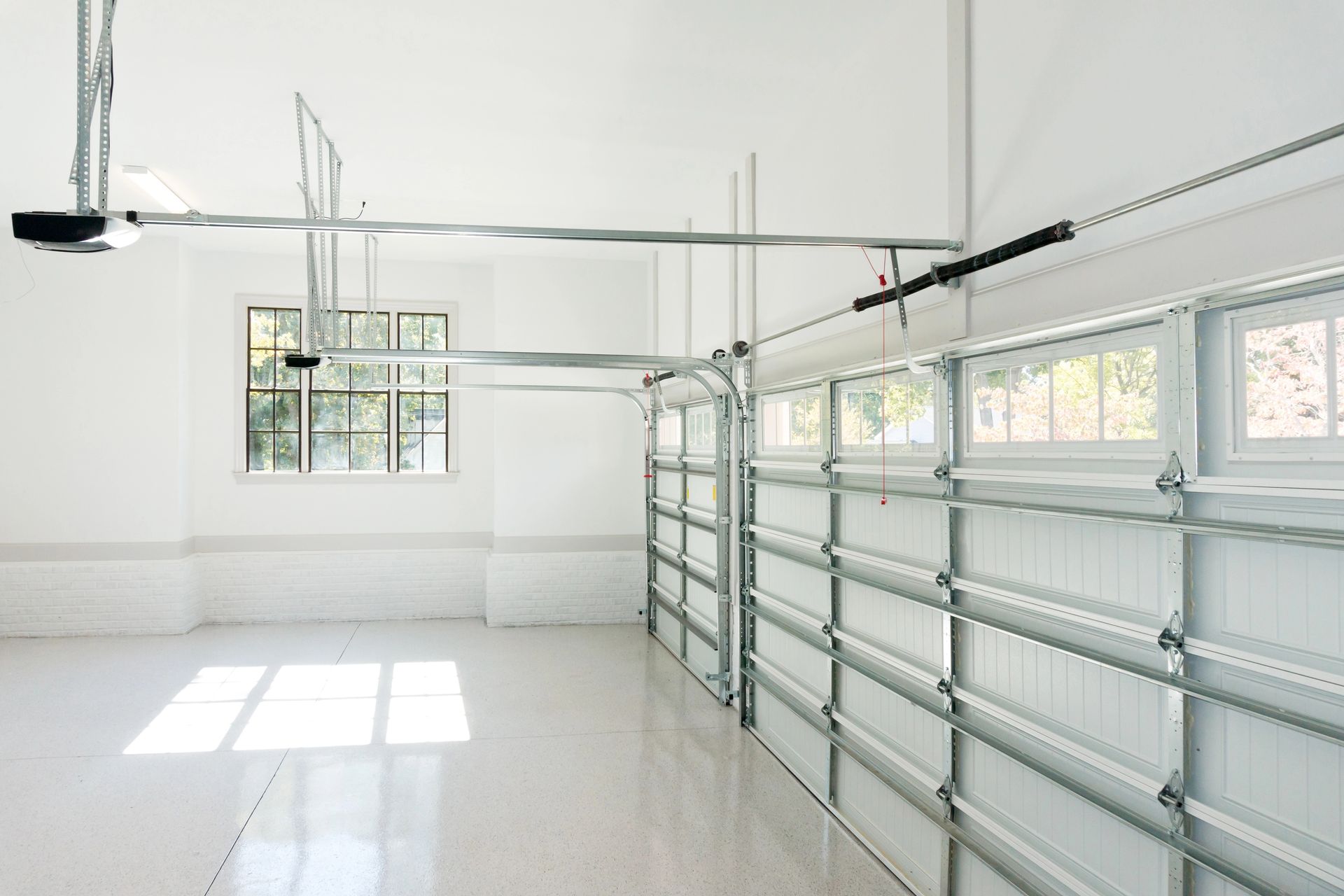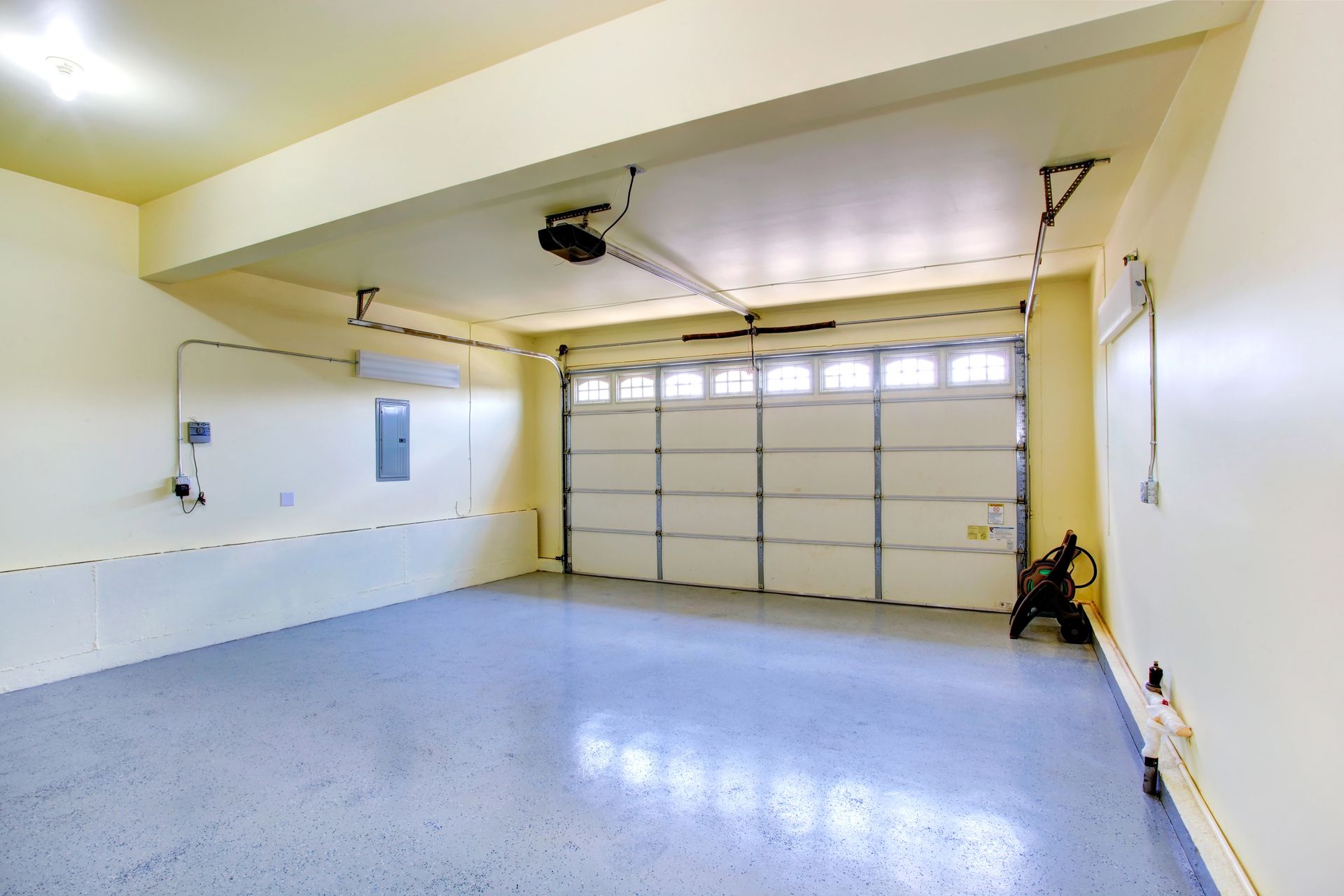How Long Do Epoxy Floor Coatings Last?
Key Takeaways
- Expect ~2–5 years for DIY and ~5–10 years for pro-installed epoxy in typical garages, with prep quality and environment driving results—especially in Pennsylvania’s freeze–thaw and salt conditions.
- If you want longer maintenance intervals and better resistance to movement, salts, and hot tires, a professionally installed polyurea system is usually the more durable choice.
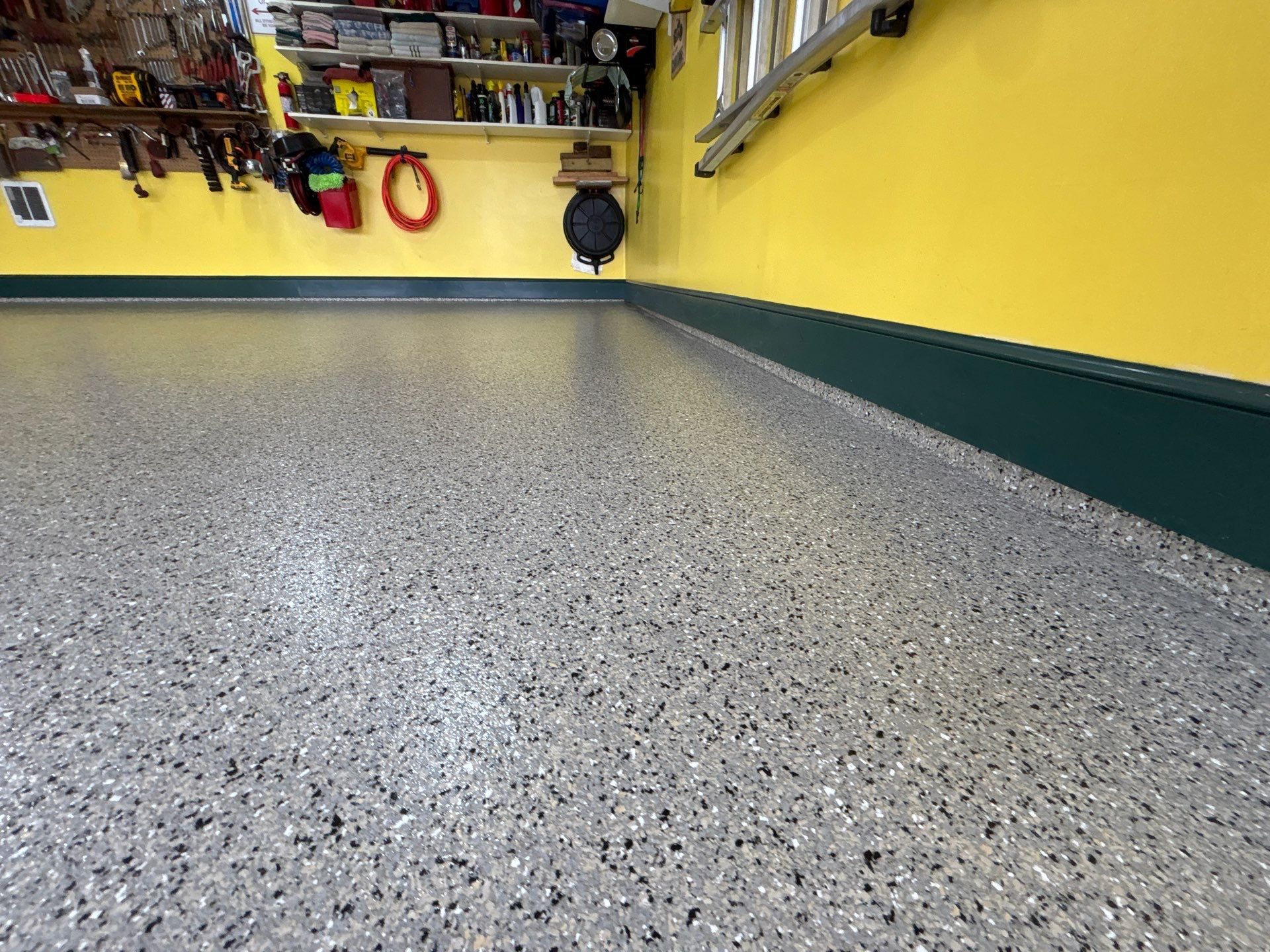
The honest answer: it depends on prep, chemistry, and how the garage is used. In light-duty residential settings with proper surface preparation, a professionally installed epoxy can often look good for 5–10 years. DIY kits on minimally prepped concrete tend to land closer to 2–5 years, especially where hot tires, road salt, and seasonal swings are part of daily life. If you want longer intervals with less babysitting, many homeowners step up to polyurea systems for better resistance to movement, salt, and chemicals.
In Pennsylvania—where freeze–thaw cycles, spring humidity, and winter road salt are part of daily garage use—prep quality and chemistry matter even more for lifespan.
What Most Impacts Epoxy Lifespan
Surface preparation
Epoxy doesn’t “stick”—it
bonds. That bond relies on the concrete having the right profile. Mechanical diamond grinding opens the surface so epoxy keys in. Acid etching or quick cleans can leave laitance, dust, and contaminants that cause early peeling.
Moisture and slab condition
Vapor drive
(common in older PA slabs), unfilled cracks, and spalled areas are weak points. Moisture can push against the coating from below, creating blisters. Pits and cracks tend to telegraph back through the system if not repaired first.
Product quality and build
100% solids epoxies with compatible primers and abrasion-resistant topcoats outlast thin, water-based kits. The
system matters: primer for penetration, body coat for build, and a topcoat for UV/abrasion resistance.
Real-world use
Hot-tire pickup, road salt, lawn chemicals, and metal shavings all take a toll—especially road salt tracked in after
Pennsylvania winters. Even the best epoxy is rigid by nature; on slabs that move a lot with freeze–thaw, it’s more prone to hairline cracking than flexible coatings.
Care and cleaning
Grit acts like sandpaper. Regular sweeping and neutral cleaner mopping helps keep gloss and traction. Harsh solvents and abrasive powders shorten the life of any coating.
Typical Lifespan Ranges You Can Expect
- DIY on light-use, newer concrete:
~2–5 years. Looks great early, but hot-tire pickup, UV yellowing, and minor peeling are common over time.
- Pro-installed on well-prepped slab:
~5–10 years for a quality epoxy system under normal garage use; heavy workshops may see shorter intervals on high-traffic lanes.
- Harsher environments (salt, temperature swings, frequent parking while hot): Expect the lower end of each range unless chemistry and prep are dialed in.
In regions like southeastern Pennsylvania with regular de-icing salt and temperature swings, expect results toward the lower end unless surface prep and coating selection are dialed in.
If your goal is to go beyond those ranges with fewer variables to manage, polyurea systems are often chosen for their flexibility and chemical resistance, which helps them ride out seasonal movement and salt exposure.
Signs Your Epoxy Is Near the End of Its Life
- Widespread dulling that cleaning no longer improves
- Peel or lift at hot tire spots or along control joints
- Color change or ambering in sunlit areas
- Cracking that mirrors slab movement or previously repaired cracks
- Persistent staining from oils, de-icers, or household chemicals
A single localized issue can often be repaired; when multiple symptoms show up across the floor, it’s usually time to plan a refresh.
Ways to Extend the Life of an Epoxy Floor
- Control the grit. Sweep or dust-mop regularly, especially after winter drives.
- Use a pH-neutral cleaner and rinse—soap residue attracts dirt.
- Protect point loads. Put pads under jack stands, kickstands, and heavy feet.
- Mind tire dressings. Silicone overspray can create slick spots; wipe wheels before parking.
- Address water and salt. A quick squeegee during winter keeps de-icers from sitting on the surface.
- Fix small issues early. Touch-ups beat full-scale repairs later.
- Winter rinse & squeegee.
During Pennsylvania salt season, a quick rinse and squeegee once a week keeps de-icers from drying on the surface.
Epoxy vs. Polyurea: Longevity Considerations
Epoxy’s rigidity is both a strength and a limitation. It creates a hard, beautiful surface but doesn’t flex much as concrete expands and contracts. Polyurea systems introduce flexibility and enhanced chemical resistance, which can better handle freeze–thaw cycles, hot tires, and road salts over time. If you’re aiming for longer maintenance intervals and a floor that stays looking new in tougher use, that’s why many homeowners choose polyurea for garages—even when epoxy would look similar on day one.
If You’re Deciding What to Do Next
- Floor looks tired but intact: A maintenance topcoat could restore gloss and traction if the base is sound.
- Peeling at hot tire zones or joints: You’re likely looking at selective removal and re-coating those areas at minimum.
- Multiple failures across the floor: Full removal and a new system is the more predictable, long-term fix.
- You want “install it and forget it” durability: Consider moving to a professionally installed polyurea system designed for daily garage use, winter salts, and quick return to service.
Frequently Asked Questions
Can epoxy really last 10+ years?
In light-duty spaces with excellent prep, premium materials, and careful maintenance, yes—though most residential garages land in the 5–10 year window due to hot tires, salts, and regular vehicle traffic.
Why did my epoxy peel in the first year?
Most early failures trace back to surface prep or unseen moisture in the slab. Contaminants, insufficient profile, or vapor drive undermine adhesion.
Will a topcoat make epoxy last longer?
A durable topcoat helps with abrasion and chemical resistance. It won’t fix poor adhesion beneath, but it can add years if the base is sound.
Is polyurea always the better choice?
Not always—goals and budget matter. For the best balance of longevity and low maintenance, especially in climates with freeze–thaw and road salts, polyurea is often the smarter long-term investment.
Does Pennsylvania’s climate shorten epoxy lifespan?
It can. Freeze–thaw movement and road-salt runoff increase stress on rigid coatings. That’s why many PA homeowners choose flexible, salt-resistant systems and prioritize mechanical grinding during prep.


